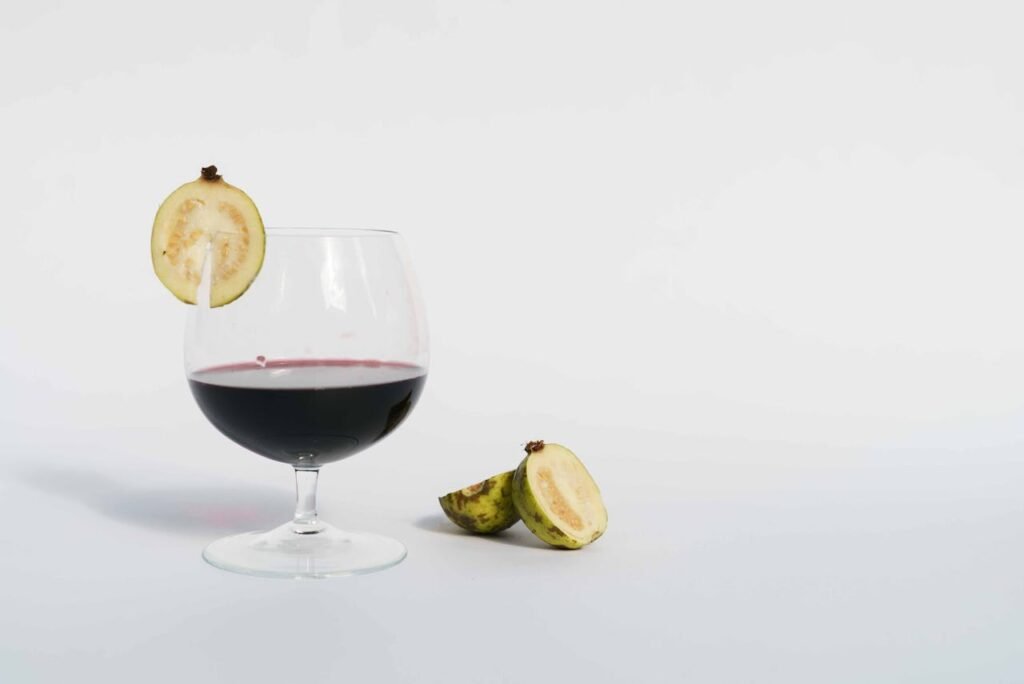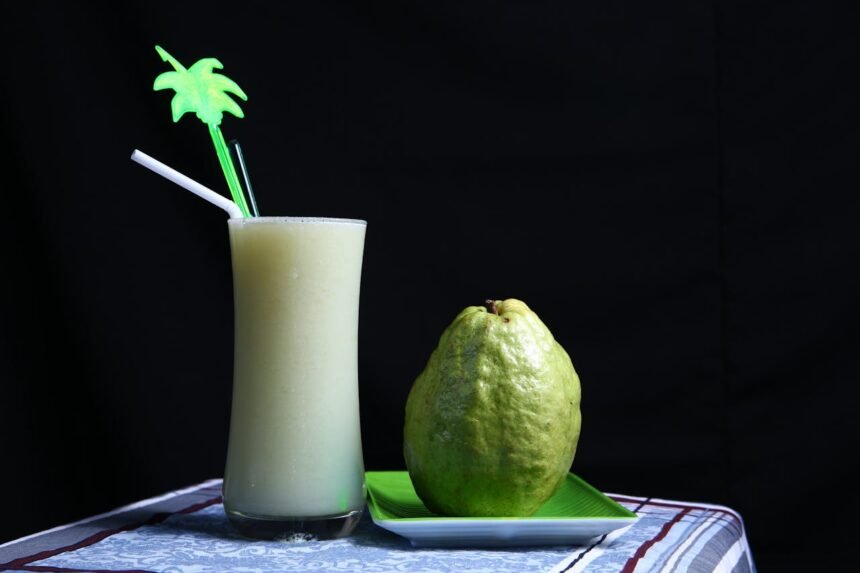Discover the incredible world of guayaba, a tropical superfruit packed with nutrients and health benefits. This comprehensive guide explores why guayaba deserves a prime spot in your diet, from its impressive nutritional profile to its versatile culinary uses. Learn about guayaba’s rich history in traditional medicine, now backed by modern science. Find out how to grow and select the best guayabas, and see how this tropical gem compares to other superfruits. Whether you’re a health enthusiast or a culinary adventurer, this article will show you why guayaba is the tropical superfruit you need in your life.
Key topics covered:
- Nutritional profile of guayaba
- Health benefits
- Culinary uses and recipes
- Growing and selecting guayaba
- Traditional medicinal uses
- Comparison with other superfruits
Dive into the world of guayaba and transform your health and culinary experiences with this amazing tropical superfruit!
Introduction: Discovering the Guayaba Gem
Guayaba, also known as guava, is a tropical superfruit that deserves a prime spot in your diet. This small but mighty fruit packs a powerful nutritional punch and offers a wide array of health benefits. In this comprehensive guide, we’ll explore why guayaba is the tropical superfruit you need in your life and how it can revolutionise your health and culinary experiences.
Guayaba, native to Central America and the Caribbean, has been cultivated for thousands of years. Its sweet-tart flavour and aromatic scent have made it a beloved fruit in many tropical and subtropical regions. But guayaba is more than just a tasty treat; it’s a nutritional powerhouse that can significantly impact your overall well-being.
As we delve into the world of guayaba, you’ll discover why this tropical superfruit is gaining recognition globally. From its impressive nutrient profile to its versatile culinary applications, guayaba has something to offer everyone. Whether you’re a health enthusiast, a culinary adventurer, or simply someone looking to add more variety to your diet, guayaba is the tropical superfruit you need in your life.

The Nutritional Profile of Guayaba: A Powerhouse of Vitamins and Minerals
Guayaba is truly a nutritional marvel, earning its reputation as a tropical superfruit. This small fruit is packed with an impressive array of vitamins, minerals, and other beneficial compounds that contribute to its superfood status. Let’s dive into the nutritional profile of guayaba and explore why it’s the tropical superfruit you need in your life.
First and foremost, guayaba is renowned for its exceptionally high vitamin C content. In fact, guayaba contains four times more vitamin C than oranges, making it one of the richest sources of this essential nutrient[1][4]. A single guayaba can provide more than 200% of your daily recommended intake of vitamin C, which is crucial for immune function, skin health, and antioxidant protection.
But the nutritional benefits of guayaba don’t stop there. This tropical superfruit is also an excellent source of:
- Dietary fibre: Guayaba is rich in both soluble and insoluble fibre, promoting digestive health and aiding in weight management[1][2].
- Vitamin A: Essential for eye health and immune function[1].
- Potassium: Important for heart health and blood pressure regulation[1][4].
- Lycopene: A powerful antioxidant that gives some guayabas their pink or red colour[1][4].
- B vitamins: Including niacin, thiamine, and riboflavin, which support energy metabolism[2].
Additionally, guayaba contains smaller amounts of other important nutrients such as vitamin E, calcium, iron, and magnesium[2]. This diverse nutrient profile makes guayaba a true tropical superfruit, offering a wide range of health benefits in a single, delicious package.
The combination of these nutrients, along with guayaba’s low calorie content, makes it an ideal addition to a healthy diet. Whether you’re looking to boost your immune system, improve your digestive health, or simply increase your overall nutrient intake, guayaba is the tropical superfruit you need in your life.
Health Benefits of Guayaba: Why This Tropical Superfruit Should Be in Your Diet
Guayaba, the tropical superfruit you need in your life, offers a myriad of health benefits that make it a valuable addition to any diet. Its rich nutrient profile contributes to various aspects of health, from boosting immunity to supporting heart health. Let’s explore the remarkable health benefits that make guayaba a true superfruit.
- Immune System Boost: Thanks to its exceptionally high vitamin C content, guayaba is a potent immune booster[1][4]. Vitamin C plays a crucial role in strengthening the immune system, helping your body fight off infections and diseases more effectively.
- Digestive Health: The high fibre content in guayaba promotes digestive health by preventing constipation and supporting regular bowel movements[1][4]. Additionally, guayaba has been shown to have anti-diarrhoeal properties, making it beneficial for various digestive issues[2].
- Heart Health: Guayaba’s potassium content and antioxidants contribute to cardiovascular health. Studies have shown that consuming guayaba can help lower blood pressure and reduce “bad” cholesterol levels while increasing “good” cholesterol[4][5].
- Diabetes Management: Despite its sweet taste, guayaba has a low glycemic index, making it a suitable fruit for people with diabetes[2][4]. The fibre in guayaba helps regulate blood sugar levels, preventing sudden spikes.
- Cancer Prevention: The high levels of antioxidants in guayaba, particularly lycopene, have been linked to a reduced risk of certain cancers[1][4]. These compounds help protect cells from damage caused by free radicals.
- Skin Health: The vitamin C and antioxidants in guayaba contribute to skin health by promoting collagen production and protecting against UV damage[4][5].
- Weight Management: As a low-calorie, high-fibre fruit, guayaba can be an excellent addition to a weight loss diet. It helps you feel full and satisfied while providing essential nutrients[6].
- Brain Function: The nutrients in guayaba, including vitamin C and B vitamins, support cognitive function and may help reduce stress[4][6].
- Pregnancy Health: Guayaba is a good source of folic acid, which is crucial for fetal development during pregnancy[6].
- Oral Health: The antibacterial properties of guayaba can help fight against oral bacteria, potentially reducing the risk of tooth decay and gum disease[6].
Incorporating guayaba into your diet can provide these numerous health benefits, making it clear why this tropical superfruit is one you need in your life. Whether eaten fresh, juiced, or used in various recipes, guayaba offers a delicious way to boost your overall health and well-being.
Culinary Uses of Guayaba: Exploring the Versatility of This Tropical Superfruit
Guayaba, the tropical superfruit you need in your life, is not only nutritious but also incredibly versatile in the kitchen. Its unique flavour profile, ranging from sweet to tangy, makes it a perfect ingredient for a wide variety of culinary applications. Let’s explore the many ways you can incorporate this tropical superfruit into your diet.
- Fresh Consumption: The simplest way to enjoy guayaba is to eat it fresh. Simply wash the fruit, cut it into slices or quarters, and enjoy. Some people prefer to eat the skin, while others scoop out the flesh, avoiding the seeds[5].
- Juices and Smoothies: Guayaba makes an excellent base for refreshing juices and smoothies. Its high vitamin C content and unique flavour can add a tropical twist to your favourite blends[7].
- Jams and Jellies: Due to its high pectin content, guayaba is perfect for making jams and jellies. These preserves are popular in many tropical countries and can be a delicious spread on toast or used in baking[8].
- Desserts: Guayaba is a star ingredient in many desserts. From guayaba cheesecake and pies to ice creams and sorbets, the possibilities are endless[7].
- Savoury Dishes: Don’t limit guayaba to sweet applications. It can be used in savoury dishes too. Try adding it to salsas, chutneys, or even as a glaze for meats[7].
- Baked Goods: Incorporate guayaba into your baking for a tropical twist. Guayaba muffins, cakes, and pastries are popular in many cuisines[7].
- Salads: Fresh guayaba can add a sweet and tangy element to fruit or green salads[5].
- Beverages: In many Latin American countries, guayaba is used to make “agua fresca,” a refreshing drink perfect for hot days[8].
- Guayaba Paste: This concentrated form of guayaba is popular in many cuisines and can be used in both sweet and savoury applications[8].
- Dried Snacks: Dried guayaba makes for a healthy and tasty snack, perfect for on-the-go munching[8].
Here’s a simple recipe to get you started with cooking with guayaba:
Guayaba Smoothie
- 1 ripe guayaba, peeled and chopped
- 1 banana
- 1 cup yoghurt
- 1/2 cup milk
- 1 tablespoon honey
- Ice cubes
Blend all ingredients until smooth and enjoy your tropical superfruit smoothie!
By incorporating guayaba into your culinary repertoire, you can enjoy the health benefits of this tropical superfruit while exploring new and exciting flavours. Whether you prefer it fresh, cooked, or as an ingredient in various dishes, guayaba is truly a versatile fruit that deserves a place in your kitchen.

Growing and Selecting Guayaba: Tips for Enjoying This Tropical Superfruit
If you’re convinced that guayaba is the tropical superfruit you need in your life, you might be wondering how to grow your own or select the best fruits at the market. Whether you’re a gardening enthusiast or simply a guayaba lover, here are some tips to help you enjoy this tropical superfruit at its best.
Growing Guayaba:
- Climate: Guayaba trees thrive in tropical and subtropical climates. They can tolerate temperatures slightly below freezing for short periods, making them suitable for growing in some temperate regions[3].
- Soil: Guayaba trees prefer well-draining, slightly acidic soil. They can adapt to various soil types but do best in loamy soil[3].
- Sunlight: These trees need full sun exposure for optimal growth and fruit production[3].
- Watering: While established trees are drought-tolerant, regular watering is crucial for young trees and during fruit development[3].
- Fertilisation: Apply a balanced fertiliser during the growing season to promote healthy growth and fruit production[3].
- Pruning: Regular pruning helps maintain the tree’s shape and encourages new growth[3].
- Harvesting: Guayabas are typically ready for harvest 90-150 days after flowering. They’re best picked when they’ve changed colour and yield slightly to pressure[3].
Selecting Guayaba:
- Colour: Ripe guayabas can be green, yellow, or maroon, depending on the variety. Look for fruits that have reached their mature colour[5].
- Texture: A ripe guayaba should yield slightly to gentle pressure. Avoid fruits that are too soft or have blemishes[5].
- Aroma: Ripe guayabas have a sweet, musky aroma. If you can smell the fruit’s fragrance, it’s likely ripe[5].
- Size: While size isn’t always an indicator of quality, larger fruits often have more flesh[5].
- Season: In many regions, guayabas are available year-round, but they may have peak seasons depending on the local climate[5].
Storage Tips:
- Ripe guayabas can be stored at room temperature for a few days[5].
- To extend their shelf life, store ripe guayabas in the refrigerator for up to a week[5].
- Unripe guayabas can be left at room temperature to ripen[5].
- Cut guayaba can be stored in an airtight container in the refrigerator for 3-4 days[5].
By following these tips for growing, selecting, and storing guayaba, you can ensure that you always have access to this tropical superfruit. Whether you’re growing your own or selecting the best fruits at the market, understanding these aspects will help you fully enjoy the benefits and flavours of guayaba in your life.
Guayaba in Traditional Medicine: Ancient Wisdom Meets Modern Science
Guayaba, the tropical superfruit you need in your life, has been used in traditional medicine systems for centuries. Its various parts, including the fruit, leaves, and bark, have been employed to treat a wide range of ailments. In recent years, modern scientific research has begun to validate many of these traditional uses, further cementing guayaba’s status as a true superfruit.
Traditional Uses:
- Digestive Health: In many cultures, guayaba leaves have been used to treat diarrhoea, dysentery, and other digestive issues[2][6].
- Oral Health: Guayaba leaves and bark have been used as natural toothbrushes and to treat oral infections[6].
- Wound Healing: The leaves and bark have been applied topically to wounds to promote healing and prevent infection[6].
- Fever Reduction: In some traditional medicine systems, guayaba leaf tea has been used to reduce fever[6].
- Diabetes Management: Guayaba leaves have been used to help control blood sugar levels in diabetic patients[2].
- Menstrual Pain Relief: Some cultures have used guayaba leaf tea to alleviate menstrual cramps[6].
Scientific Validation:
Modern research has begun to support many of these traditional uses:
- Anti-diarrhoeal Properties: Studies have shown that guayaba leaf extract can indeed reduce the duration and intensity of diarrhoea[2].
- Antimicrobial Activity: Research has confirmed the antimicrobial properties of guayaba extracts, supporting its traditional use in treating infections[6].
- Antidiabetic Effects: Scientific studies have demonstrated that guayaba leaf extract can help lower blood sugar levels[2].
- Anti-inflammatory Properties: Guayaba extracts have shown significant anti-inflammatory effects in laboratory studies[6].
- Anticancer Potential: While more research is needed, preliminary studies suggest that compounds in guayaba may have anticancer properties[1][4].
- Cardiovascular Health: Research has shown that guayaba consumption can help lower cholesterol levels and blood pressure[4][5].
It’s important to note that while these traditional uses and scientific studies are promising, more research is needed to fully understand the medicinal properties of guayaba. Always consult with a healthcare professional before using guayaba or any other natural remedy for medicinal purposes.
The rich history of guayaba in traditional medicine, combined with emerging scientific evidence, further underscores why this tropical superfruit is one you need in your life. Whether consumed as a food or used in traditional remedies, guayaba offers a wealth of potential health benefits that have been recognised for generations and are now being confirmed by modern science.
Guayaba vs. Other Superfruits: How This Tropical Gem Compares
Guayaba, the tropical superfruit you need in your life, stands out even among other celebrated superfruits. Let’s compare guayaba to some other well-known superfruits to see how it measures up:
| Nutrient | Guayaba | Blueberry | Acai Berry | Pomegranate |
|---|---|---|---|---|
| Vitamin C | Very High | Moderate | Low | Moderate |
| Fibre | High | Moderate | High | Moderate |
| Antioxidants | High | High | Very High | Very High |
| Calories (per 100g) | Low | Low | Moderate | Moderate |
| Potassium | High | Low | Moderate | High |
| Vitamin A | Moderate | Low | Low | Low |
Key Comparisons:
- Vitamin C Content: Guayaba outshines most other superfruits in vitamin C content, containing up to four times more than oranges[1][4].
- Fibre: Guayaba is an excellent source of dietary fibre, comparable to or exceeding many other superfruits[1][2].
- Antioxidants: While all these superfruits are rich in antioxidants, guayaba holds its own with high levels of lycopene and other beneficial compounds[1][4].
- Calorie Content: Guayaba is relatively low in calories, making it an excellent choice for those watching their calorie intake[6].
- Versatility: Guayaba can be used in a wide variety of culinary applications, from fresh consumption to cooking and baking, rivalling the versatility of many other superfruits[7][8].
- Accessibility: In many tropical and subtropical regions, guayaba is more readily available and often more affordable than some imported superfruits.
- Traditional Use: Guayaba has a rich history of use in traditional medicine, similar to many other superfruits[6].
While each superfruit has its unique benefits, guayaba stands out for its exceptional vitamin C content, high fibre, and versatility. Its combination of nutritional value, culinary uses, and potential health benefits make it a worthy addition to any diet, even one that already includes other superfruits.
Citations:
[1] https://svetdimitrov.com/guava-superfruit/
[2] https://www.healthifyme.com/blog/guava-fruit/
[3] https://www.w3.org/TR/WCAG22/
[4] https://www.indiatvnews.com/health/superfood-guava-7-amazing-health-benefits-of-this-super-fruit-2023-11-08-901867
[5] https://farmfreshbangalore.com/blogs/organic/the-incredible-guava-a-tropical-fruit-packed-with-health-benefits
[6] https://www.truemeds.in/blog/guava-fruit-benefits-and-side-effects
[7] https://www.relish.com/food-wiki/153825/guava-important-facts-health-benefits-and-recipes
[8] https://en.wikipedia.org/wiki/Guava
[9] https://www.webmd.com/diet/health-benefits-guava
[10] https://www.mdpi.com/2227-9717/9/6/1075






